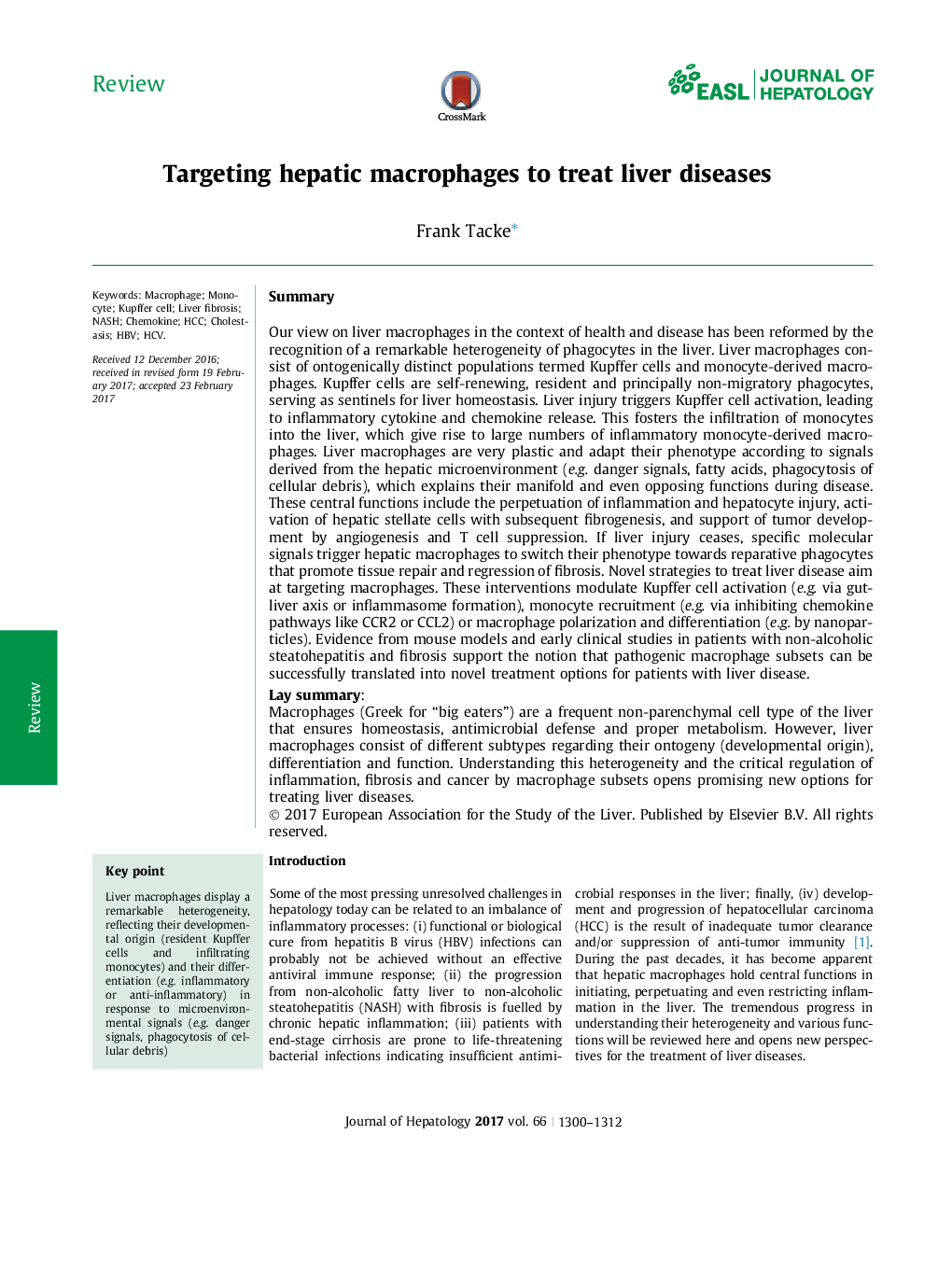| کد مقاله | کد نشریه | سال انتشار | مقاله انگلیسی | نسخه تمام متن |
|---|---|---|---|---|
| 5660591 | 1407493 | 2017 | 13 صفحه PDF | دانلود رایگان |
SummaryOur view on liver macrophages in the context of health and disease has been reformed by the recognition of a remarkable heterogeneity of phagocytes in the liver. Liver macrophages consist of ontogenically distinct populations termed Kupffer cells and monocyte-derived macrophages. Kupffer cells are self-renewing, resident and principally non-migratory phagocytes, serving as sentinels for liver homeostasis. Liver injury triggers Kupffer cell activation, leading to inflammatory cytokine and chemokine release. This fosters the infiltration of monocytes into the liver, which give rise to large numbers of inflammatory monocyte-derived macrophages. Liver macrophages are very plastic and adapt their phenotype according to signals derived from the hepatic microenvironment (e.g. danger signals, fatty acids, phagocytosis of cellular debris), which explains their manifold and even opposing functions during disease. These central functions include the perpetuation of inflammation and hepatocyte injury, activation of hepatic stellate cells with subsequent fibrogenesis, and support of tumor development by angiogenesis and T cell suppression. If liver injury ceases, specific molecular signals trigger hepatic macrophages to switch their phenotype towards reparative phagocytes that promote tissue repair and regression of fibrosis. Novel strategies to treat liver disease aim at targeting macrophages. These interventions modulate Kupffer cell activation (e.g. via gut-liver axis or inflammasome formation), monocyte recruitment (e.g. via inhibiting chemokine pathways like CCR2 or CCL2) or macrophage polarization and differentiation (e.g. by nanoparticles). Evidence from mouse models and early clinical studies in patients with non-alcoholic steatohepatitis and fibrosis support the notion that pathogenic macrophage subsets can be successfully translated into novel treatment options for patients with liver disease.Lay summaryMacrophages (Greek for “big eaters”) are a frequent non-parenchymal cell type of the liver that ensures homeostasis, antimicrobial defense and proper metabolism. However, liver macrophages consist of different subtypes regarding their ontogeny (developmental origin), differentiation and function. Understanding this heterogeneity and the critical regulation of inflammation, fibrosis and cancer by macrophage subsets opens promising new options for treating liver diseases.
148
Journal: Journal of Hepatology - Volume 66, Issue 6, June 2017, Pages 1300-1312
